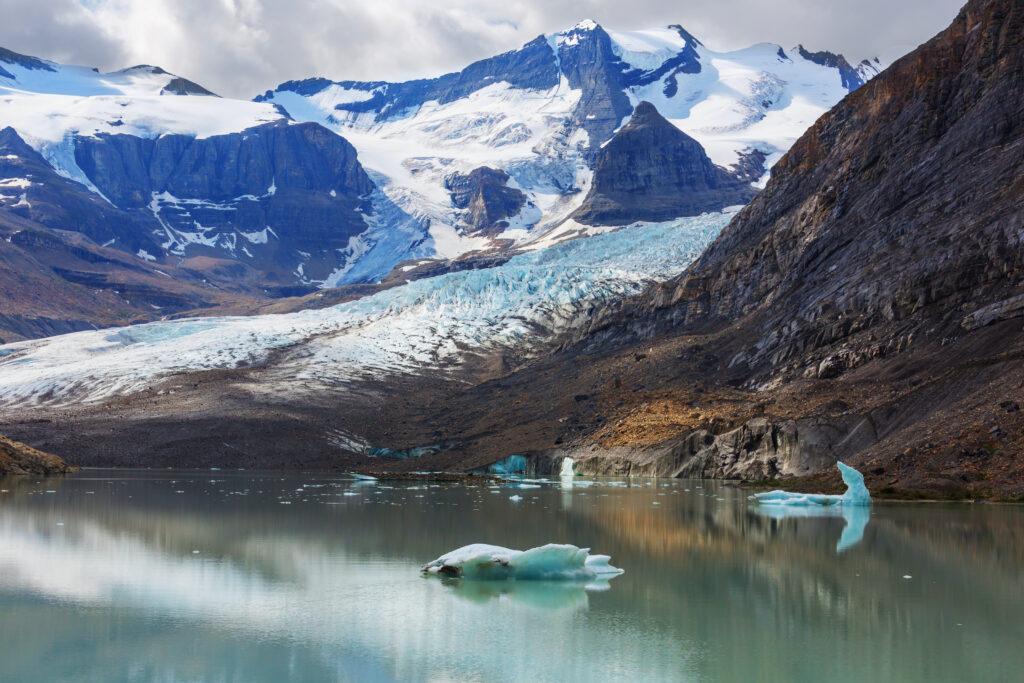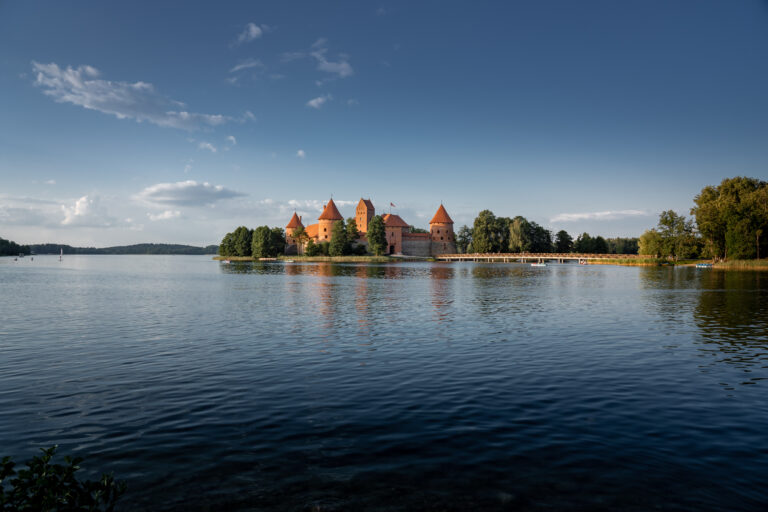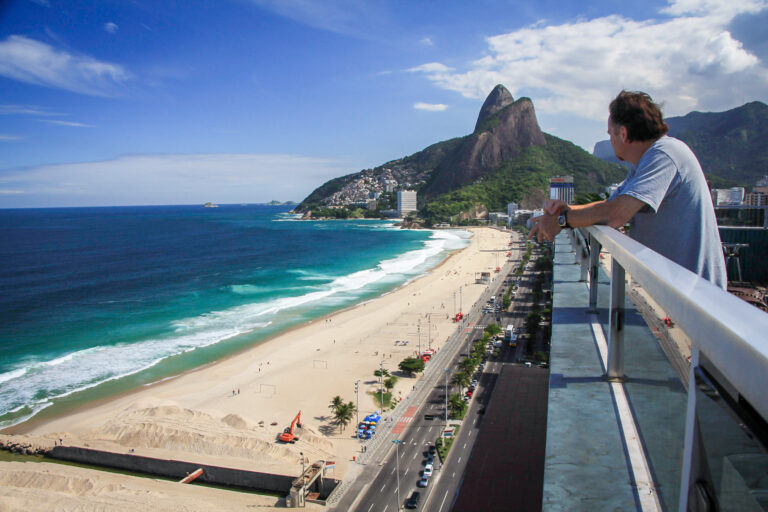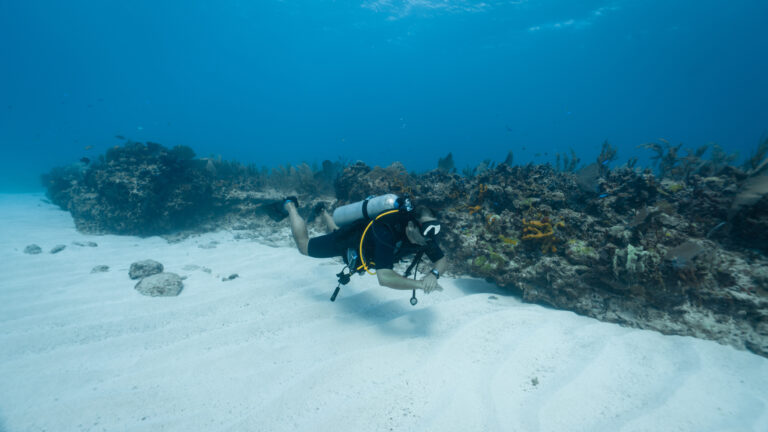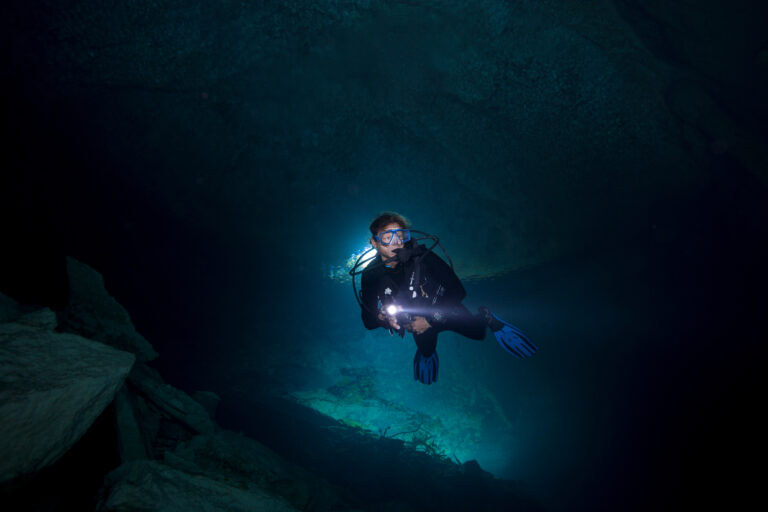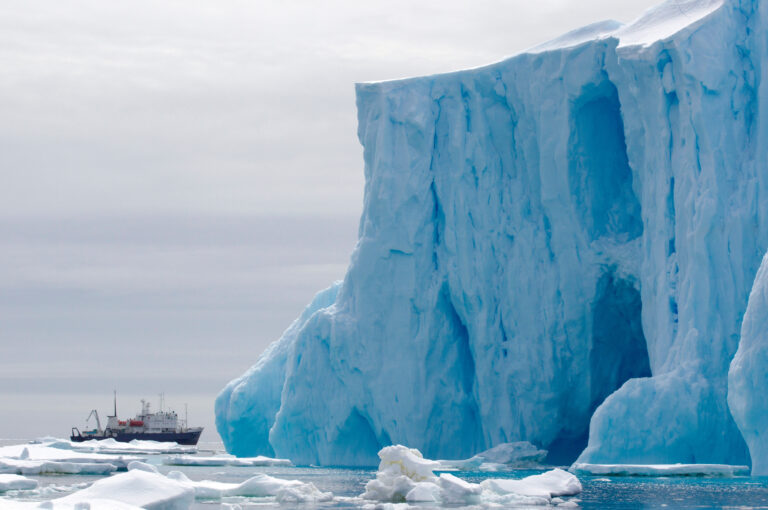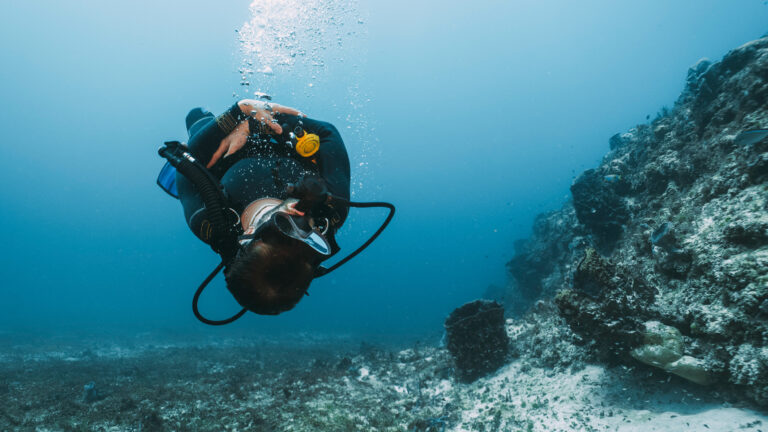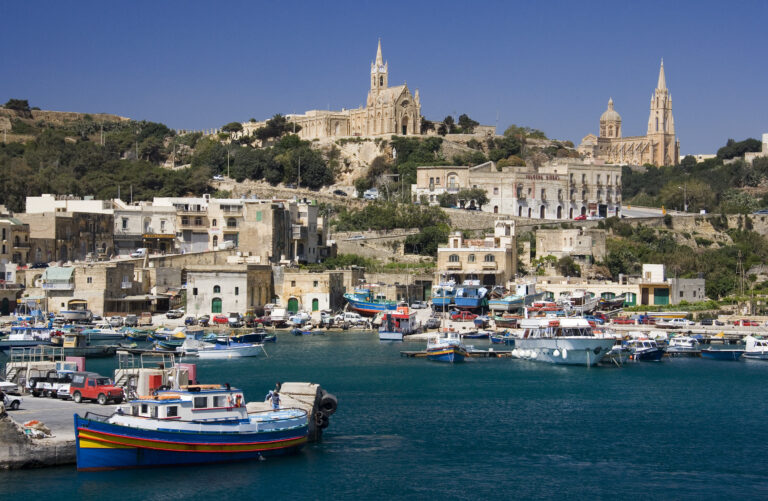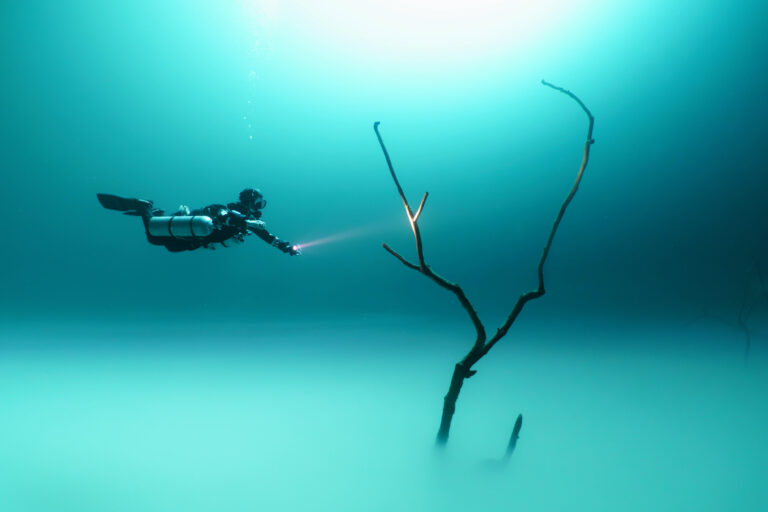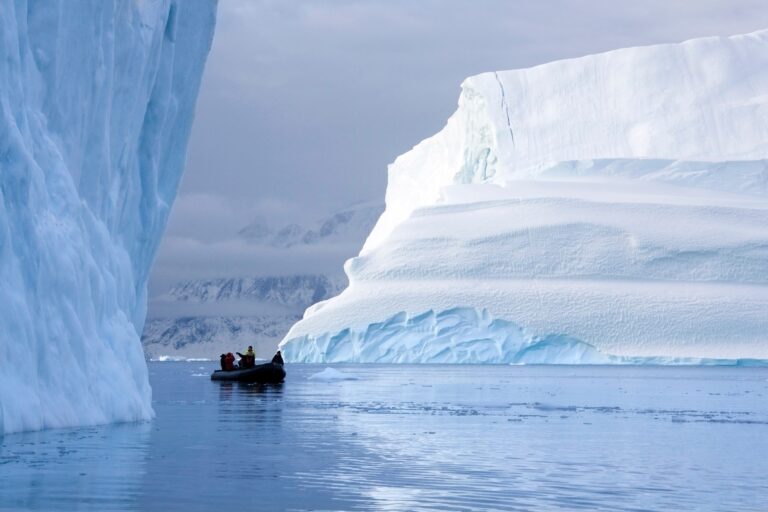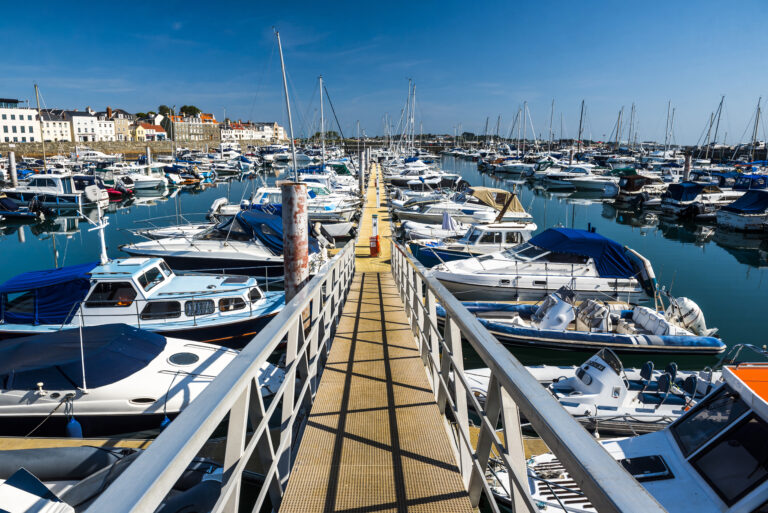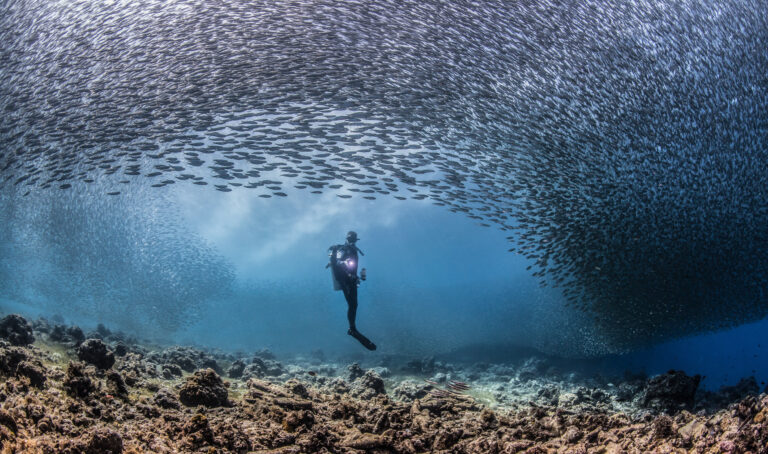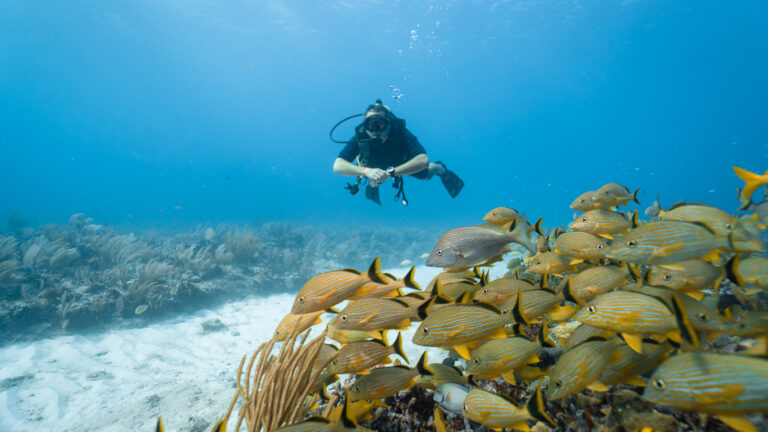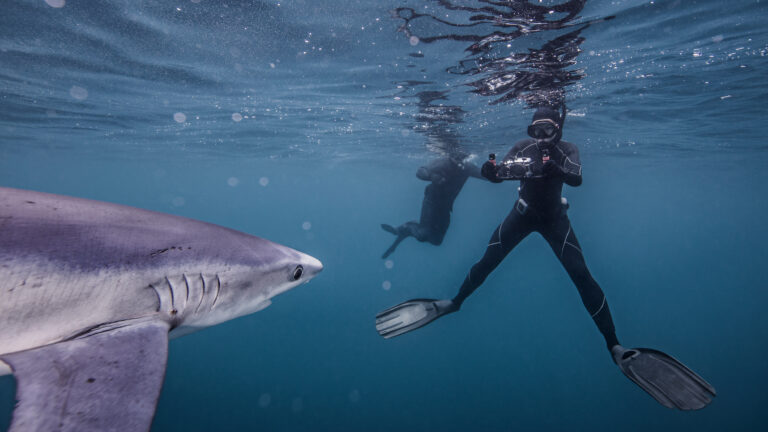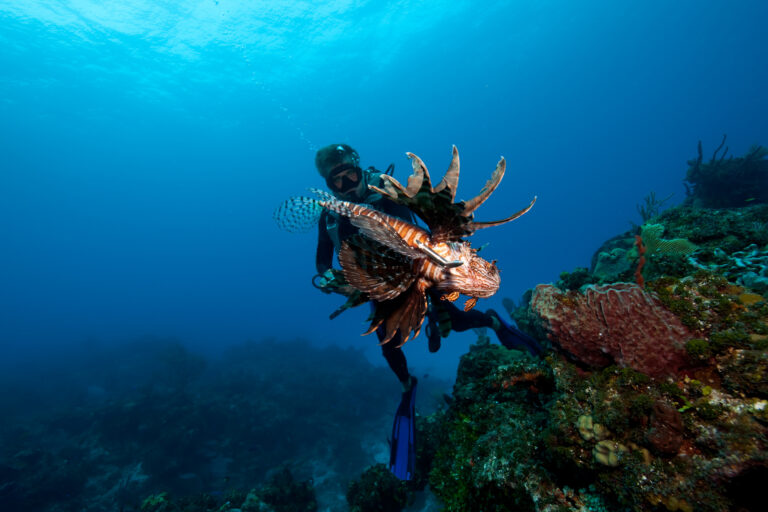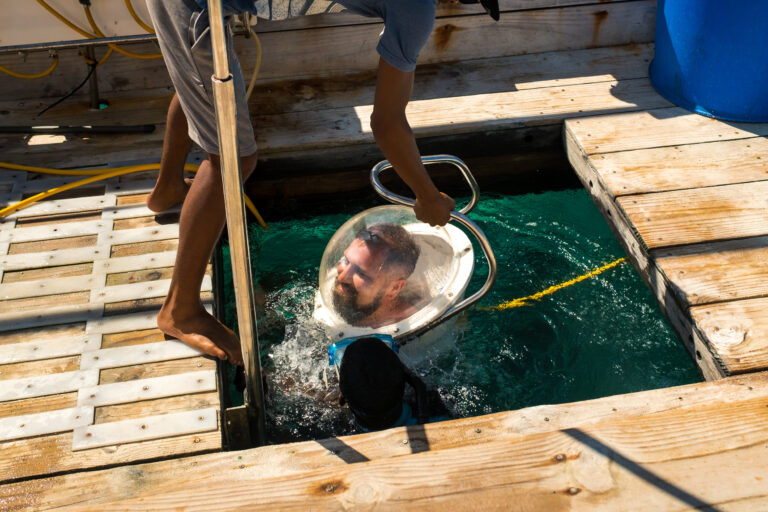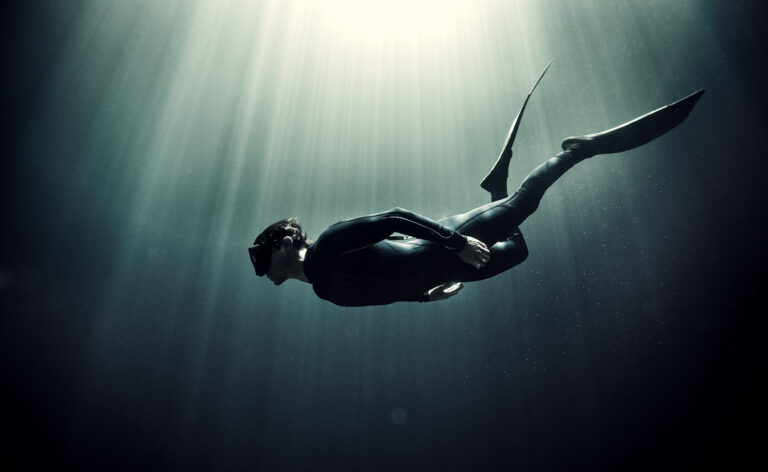SCUBA DIVERS’ TRAVEL GUIDE TO Canada
Canada is a vast and diverse country that offers scuba divers a range of experiences, from exploring shipwrecks and marine life in the Atlantic and Pacific oceans, to diving in the Great Lakes and freshwater rivers. Whether you are looking for cold-water adventures, historical sites, or stunning underwater scenery, Canada has something for every diver. You can dive with beluga whales in Manitoba, discover the world’s largest artificial reef in British Columbia, or marvel at the colorful corals and sponges in Newfoundland. Canada is also home to some of the most beautiful natural landscapes in the world, such as the Rocky Mountains, Niagara Falls, and the Arctic tundra. No matter what season you visit, you will find plenty of activities and attractions to enjoy on land as well as underwater. Canada is a scuba diving destination that will surprise and delight you with its diversity and beauty.
LOCATION AND GEOGRAPHY
Canada, the second-largest country in the world, offers a vast and diverse underwater experience for scuba divers, stretching from the Pacific waters of British Columbia to the Atlantic provinces of Nova Scotia and Newfoundland. The west coast is renowned for its cold-water diving and vibrant marine life, including the world-famous emerald sea of the Great Bear Rainforest and the historic shipwrecks of Vancouver Island. In the east, the frigid waters of the Atlantic Ocean reveal a different kind of spectacle, with iceberg diving in Newfoundland and the chance to explore the ocean’s history through numerous shipwrecks off Nova Scotia’s coast. Inland, the Canadian Shield presents a plethora of freshwater diving opportunities in the clear lakes of Ontario and the submerged landscapes of the Great Lakes. Each region offers unique topographical features, from kelp forests and coral gardens to underwater cliffs and canyons, ensuring that Canada’s geography provides a rich tapestry of dive sites suitable for adventurers seeking the thrill of the underwater world in a variety of climates and conditions.
VISA AND ENTRY REQUIREMENTS
Before embarking on your underwater adventure to explore Canada’s diverse and breathtaking dive sites, it is essential to ensure that your travel documents are in order. Visitors to Canada from most countries will require a valid passport and may need to obtain an Electronic Travel Authorization (eTA) or a visitor visa, depending on their nationality. The eTA is a simple online process, but it’s important to apply in advance of your trip. Those requiring a visa should apply through the nearest Canadian embassy or consulate, allowing ample time for processing. American citizens can enter Canada with a valid passport and do not need an eTA or visa for short visits. It’s also important to note that some individuals may be deemed inadmissible to Canada for various reasons, including past criminal convictions. To ensure a smooth entry into Canada and a hassle-free start to your scuba diving experience, check the latest entry requirements from the Government of Canada’s official website or consult with your local Canadian diplomatic mission well ahead of your planned travel dates.
GETTING TO Canada
Getting to Canada for an unforgettable scuba diving adventure is a straightforward process for travelers from around the globe. Major international airports such as Toronto Pearson (YYZ), Vancouver International (YVR), and Montréal-Pierre Elliott Trudeau (YUL) serve as primary gateways, offering direct flights from numerous international cities. For those closer to the border, driving into Canada from the United States is another viable option, with several land crossings available across the extensive US-Canada border. Once in the country, domestic flights, trains, and car rentals provide access to Canada’s diverse diving locations, including the vibrant Pacific waters of British Columbia, the historic shipwrecks in the Great Lakes, and the rugged Atlantic shores of Newfoundland and Nova Scotia. Whether you’re arriving by air or land, ensure you have the necessary travel documents, such as a valid passport and, if required, a visa or an Electronic Travel Authorization (eTA). With its vast expanse and varied underwater landscapes, Canada promises a scuba diving experience as rich and diverse as the country itself.
BEST TIME TO DIVE
The best time to scuba dive in Canada largely depends on the region you plan to explore, as this vast country offers a diverse range of underwater experiences influenced by both Pacific and Atlantic waters. For the Pacific coast, particularly British Columbia, the prime diving season stretches from April to September when the water is warmer and the visibility is often at its best, with the chance to encounter a rich array of marine life including giant Pacific octopuses and wolf eels. On the Atlantic side, the optimal window is from July to early September, with Newfoundland and Nova Scotia offering spectacular iceberg dives and shipwreck explorations in clearer, calmer waters. Inland, freshwater diving in the Great Lakes can be best enjoyed from late spring to fall, with visibility peaking in the colder months. However, for the truly adventurous, ice diving in Canada presents a unique opportunity during the winter months, though it requires specialized training and equipment. Regardless of the season, Canadian waters demand a full wetsuit or drysuit due to the generally cooler temperatures.
ACCOMMODATION OPTIONS
Accommodation options for scuba divers exploring Canada’s underwater marvels are as diverse as the country’s sprawling landscapes. From the rugged coasts of British Columbia to the historic shipwrecks in the Great Lakes, divers can find a range of places to stay that cater to their unique needs. In British Columbia, divers might opt for oceanfront lodges or cozy bed and breakfasts that offer easy access to the Pacific’s rich marine life. Over on the east coast, Newfoundland and Nova Scotia provide charming inns and seaside cottages where the Atlantic’s cold waters are just a stone’s throw away. For those venturing into the interior, the Great Lakes region boasts dive-friendly resorts and cabins that often include gear rinsing stations and storage facilities. No matter where in Canada you submerge, you’ll find accommodations that understand the needs of divers, from gear rentals to knowledgeable staff who can point you to the best local dive sites. Whether you’re looking for luxury or simplicity, Canada’s array of accommodations ensures that you can focus on the underwater adventure ahead.
DIVE OPERATORS AND DIVE SHOPS
In the vast and diverse waters of Canada, dive operators and dive shops are your indispensable guides to an underwater world teeming with life and history. From the Pacific playgrounds of British Columbia, where you can explore lush kelp forests and encounter the giant Pacific octopus, to the shipwreck-laden depths of the Great Lakes, Canadian dive shops offer a wealth of local knowledge and expertise. They provide not only equipment rentals and air fills but also certifications, guided tours, and insider tips on the best dive spots, such as the world-renowned cold-water diving in Newfoundland and Labrador. These operators prioritize safety and environmental stewardship, ensuring that your subaquatic adventure respects the delicate marine ecosystems. Whether you’re a novice diver looking to get your fins wet or an experienced underwater explorer seeking the thrill of ice diving or the mystery of submerged historical sites, Canada’s dive operators and shops are your gateway to an unforgettable aquatic journey.
TRANSPORTATION WITHIN Canada
Transportation within Canada offers a variety of options to access its diverse and often remote scuba diving locations. For long distances, domestic flights connect major cities and regions, with airlines such as Air Canada and WestJet servicing a broad network of destinations, including those near prime diving spots. Once in the vicinity of your dive site, car rentals are widely available and provide the flexibility to explore the vast Canadian landscapes at your own pace, which is particularly useful for reaching coastal areas and lakes off the beaten path. In some cases, especially in British Columbia or the Atlantic provinces, ferries are a necessary and scenic part of the journey to island dive sites. For the more adventurous, smaller floatplanes can be chartered to whisk you away to secluded areas, offering a unique aerial view before you plunge into the underwater world. Always remember to check local travel advisories, as weather conditions can significantly impact transportation options, especially in more remote or northern regions.
CURRENCY AND PAYMENT METHODS
When planning a scuba diving trip to Canada, it’s important to understand the currency and payment methods commonly accepted across this vast country. The Canadian dollar (CAD) is the official currency, and it comes in denominations of $5, $10, $20, $50, and $100 bills, as well as coins that include the distinctive loonie ($1) and toonie ($2). Credit cards such as Visa, MasterCard, and American Express are widely accepted at dive shops, resorts, and restaurants, especially in popular diving destinations like British Columbia and Newfoundland. However, it’s advisable to carry some cash for smaller purchases or in remote areas where electronic payments might not be as readily accepted. ATMs are readily available in urban centers and even in some smaller towns, but be aware of potential fees for international transactions. For the most seamless experience, inform your bank of your travel plans to avoid any interruptions in service, and consider exchanging a portion of your money into Canadian dollars before arriving or at a currency exchange in the airport for immediate expenses.
LANGUAGE AND COMMUNICATION
When diving in Canada, communication both above and below the water is primarily conducted in English, with French being widely spoken in the province of Quebec and in some parts of New Brunswick and Ontario. It’s important for divers to familiarize themselves with key diving terms and safety signals in at least one of these languages. Underwater, divers use universal hand signals to communicate, as verbal communication is not possible. Before diving, it’s essential to review these signals with your dive group, especially if there are divers from various linguistic backgrounds. Dive briefings are typically conducted in English, or French in Francophone regions, and it’s crucial to ensure that you fully understand the dive plan, safety procedures, and emergency protocols. If you’re not fluent in the local language, consider hiring a guide or seeking a dive operator that provides services in your preferred language to enhance your diving experience and safety. Additionally, learning a few local phrases and expressions can enrich your overall travel experience in Canada’s diverse and culturally rich regions.
LOCAL CULTURE AND ATTRACTIONS
Canada, with its vast and diverse landscapes, offers a unique blend of cultural experiences and attractions that complement the thrill of its underwater adventures. Above the surface, visitors can immerse themselves in the rich tapestry of Canadian culture, which ranges from the vibrant Indigenous heritage that is celebrated through art, music, and storytelling, to the historical charm of colonial architecture in cities like Quebec City and Victoria. Each region boasts its own local specialties, from the succulent seafood of the Maritimes to the hearty poutine of Quebec. Scuba divers can explore the local markets for handcrafted souvenirs, engage with friendly locals at a neighborhood hockey game, or unwind to the sounds of live folk music at a coastal tavern. The natural wonders are equally breathtaking, with opportunities to hike through pristine forests, observe wildlife in their natural habitats, or witness the awe-inspiring spectacle of the Northern Lights. Canada’s blend of cultural richness and natural beauty ensures that the time spent above water is just as captivating as the time spent exploring its underwater marvels.
CULTURAL ETIQUETTE AND TIPS
When scuba diving in Canada, it’s important to embrace the country’s cultural mosaic and respect the diverse customs you may encounter. Canadians are known for their politeness and inclusivity, so always greet your fellow divers and locals with a friendly demeanor and an open mind. Environmental stewardship is deeply valued, so be sure to adhere to all guidelines regarding the protection of marine life and habitats. When engaging with local dive shops or guides, punctuality is appreciated, as is a clear communication of your diving experience and expectations. Tipping for good service is customary in Canada, with 10-20% being the norm for dive guides and boat crews. If you’re diving in areas with indigenous communities, such as the Pacific Northwest or parts of Atlantic Canada, take the time to learn about the local First Nations and their connection to the ocean, and show respect for their traditions and territories. Lastly, be prepared for conversations about the weather—it’s a quintessential Canadian icebreaker and a shared experience in a country known for its varied and often unpredictable climate.
LOCAL LAWS AND REGULATIONS RELEVANT TO TOURISTS
When planning a scuba diving trip to Canada, it is essential for tourists to familiarize themselves with local laws and regulations to ensure a safe and lawful experience. Canada enforces strict guidelines for environmental protection, and divers must adhere to rules that prohibit the disturbance of marine life and habitats, including the removal of artifacts or natural objects from dive sites. Diving within Marine Protected Areas (MPAs) often requires permits, and activities are closely monitored to safeguard the ecological integrity of these regions. Additionally, divers should be aware of regulations specific to the province or territory they are visiting, as rules can vary, particularly concerning dive flag usage, mandatory safety equipment, and the requirement for dive certification proof. It is also important to note that some areas may have access restrictions or seasonal limitations to protect sensitive ecosystems or due to weather conditions. Before embarking on any dives, it is advisable to consult with local dive shops or authorities to obtain the most current information on regulations and to ensure compliance with Canadian diving laws.
SAFETY TIPS AND EMERGENCY CONTACTS
When diving in Canada’s diverse underwater environments, safety is paramount. Due to the country’s often cold water temperatures, proper thermal protection like a drysuit is essential to prevent hypothermia. Always dive within your certification limits, and be mindful of local conditions such as currents, tides, and visibility. It’s crucial to carry a dive knife or cutting tool and a surface signaling device, such as a whistle or a surface marker buoy. Before your dive, ensure you’re familiar with the local emergency procedures and have the contact information for the nearest hyperbaric chamber, which can be obtained from dive operators or local dive clubs. In case of an emergency, the Canadian Coast Guard can be reached on VHF channel 16, or you can dial the countrywide emergency number, 911, for immediate assistance. Additionally, DAN (Divers Alert Network) offers emergency advice and assistance for diving-related incidents and can be contacted at +1-919-684-9111. Always dive with a buddy, plan your dive, and dive your plan, keeping safety as your top priority to ensure a memorable underwater experience in Canada’s majestic waters.
HEALTH AND TRAVEL INSURANCE
When planning a scuba diving trip to Canada’s diverse underwater landscapes, it’s crucial to consider your health and travel insurance coverage. The country’s pristine waters, from the Pacific kelp forests of British Columbia to the historic shipwrecks in the Great Lakes, offer breathtaking experiences that come with inherent risks. Ensure your insurance policy includes coverage for scuba diving activities, as not all policies automatically provide this. It should cover hyperbaric treatment, medical evacuation, and repatriation in case of a diving emergency. Canada has an excellent healthcare system, but it’s not free for visitors, so comprehensive travel insurance can save you from incurring substantial costs. Additionally, due to the remote locations of some dive sites, access to medical facilities may be limited, making evacuation coverage particularly important. Always carry proof of your insurance and emergency contact information with you, and verify that your policy remains valid for the duration of your trip and for the depths you plan to dive.

